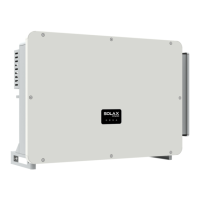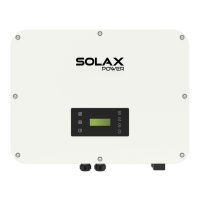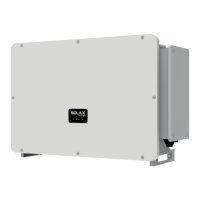30
Product Overview
Peak Shaving mode
Peak Shaving mode is set for leveling out peaks in electricity use. System is controlled to
charge up during off-peak hours and discharged during peak hours.
7:00
PV and b attery power the load
18:00 23: 00
A
B
C
A
D
9:00
Charging
ChargeFromGrid Period
Battery powers the load
(Assuming peak power from 7:00 to 9:00 and from 18:00 to 23:00)
Idea: Leveling out peaks in electricity use.
Peak Shaving Mode
Battery
status
Power
The grid charges
the battery
Load fluctuation
Peakshaving
Period 1
Peakshaving Period 2
Expected PV
power curve
Grid
consumption
curve
The grid powers
the load
Charge the battery
until SoC reaches
Reserved_SoC
PV powers the load
Time Line
PV powers
the load
The grid powers
the load
PVCharge Period
Battery
SoC
Working
mode
Charging
Charging
Standby Standby StandbyDischarging
Discharging
Purchase electricity
Purchase
electricity
Store electricity Self use Peak shaving 2
Peak
shaving 1
Figure 2-22 Peak Shaving time periods
Table 2-13 Descripton of Peak Shaving mode
Time period Battery SOC
Load and
peaklimits
conditions
Inverter working status
Period A X X
Battery charging period during which
discharging is not allowed and the PV will
charge the battery first for peak shaving.
Period B
and D
X
Load <
Peaklimits
The PV will charge the battery first. When
the battery is fully charged, the PV will
supply power for loads, and the surplus
power will feed into the grid.
X
Load >
Peaklimits
The PV and battery will discharge energy
for loads and thus reduce the amount of
energy purchased from the grid.
Period C X X
The battery does not discharge. The PV will
charge the battery to the "Reserved SOC" first
and then supply power for loads, with the
surplus power feeding into the grid.
Charging the battery first in these periods
is storing energy for the peak shaving.
Note:
PeakLimits (W): The load consumption from grid side
Reserved SOC (%): Refers to the lower limit of SoC required for later peak shaving period.
The default value is 50%. The adjustment range is 10~100%.
X: Not applicable

